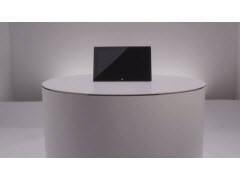With Surface, does Microsoft trust the fate of Windows 8 to OEMs?

While I was watching Microsoft's Surface tablet announcement the other day, a question kept nagging at me throughout:
"Why is Microsoft choosing to enter the tablet market with its own hardware?"
It just didn't make sense.
Sure, Microsoft has dabbled with hardware such as mice and keyboards, and enjoyed considerable success with its Xbox hardware, but traditionally Microsoft is a software company and it leaves the hardware to OEMs and ODMs.
Microsoft Surface tablet (Gallery)
| Image Gallery: Microsoft Surface tablet |  | |||||
 Then last night the answer came to me. The reason why Microsoft has decided to enter the tablet market is because it doesn't trust the fate of Windows 8 and Windows RT on tablets to the OEMs.
Then last night the answer came to me. The reason why Microsoft has decided to enter the tablet market is because it doesn't trust the fate of Windows 8 and Windows RT on tablets to the OEMs.
When it comes to desktops and notebooks, Microsoft knows that all of its hardware partners will pull their weight. They have to because this is where the bulk of their profits come from. OEMs like Dell, HP and Sony know how to build desktops and notebooks, and replacing Windows 7 with Windows 8 doesn't change things that much.
Same hardware, different operating system.
But tablets are a different matter. Apart from the likes of Apple, Amazon and, to a lesser extent, Samsung, tablets -- both Windows and Android -- have so far only offered hardware makers an almost sure-fire way to lose money.
While Microsoft would like us all to feel that tablets are a slam-dunk guaranteed success, plenty of OEMs have already been dealt a bloody nose by thinking they could take on the iPad with Android tablets. Losing money is one way to make OEMs and ODMs nervous, and my contacts within some of the world's largest OEMs are telling me that they're far from convinced that Windows 8, or Windows RT --- otherwise known as Windows on ARM --- will be any more successful against the iPad than Android was.
Nervous hardware makers mean that they are less likely to take chances with Windows 8 and Windows RT tablets. Microsoft would ideally like to see a whole slew of tablets hitting the market, incorporating fancy high-end features and fittings.
The reality will be conservative designs that err on the side of caution and put price above premium features.
Why doesn't Microsoft just allow the hardware makers to do what they want in the tablet market? It's because the success of Windows 8 and Windows RT is tied to the success of tablets because of the heavy emphasis on touch. Unless touch gets significant traction quickly there's a significant possibility that the new Metro user interface found in Windows 8, along with other trappings such as the Windows application store, could be in danger of being axed from the next incarnation of Windows.
Microsoft is relying on Windows-powered tablets to make the touch features present in Windows 8 and Windows RT mainstream.
If tablets fail, touch on Windows becomes essentially irrelevant. Microsoft knows this, and it has decided to take the fate of tablets out of the hands of the hardware makers and has come up with an x86 and an ARM tablet of its own. Not only will this mean that consumers are guaranteed that there will be high-quality tablets on the market, but it also shows the OEMs and ODMs that Microsoft is confident enough in tablets to bring its own to market.
This is why Microsoft has bought its own line of tablets to market, and this is why it decided to announce them so far ahead of the actual release of the tablet.
Will this gamble pay off? We'll have to wait and see to find out.
Image credit: CNET.
Related:
- Surface: Why Microsoft's big mystery turns out to be a big mistake
- With Surface tablet, Microsoft breaks tradition
- Microsoft's new Surface tablets make a solid first impression
- Can Microsoft build a tablet that people will want to buy?
- Microsoft Surface tablets: Obviously designed for me
- Will Microsoft Surface for Windows 8 Pro tablets be competition for Ultrabooks?
- Okay, let me get this straight. Did Microsoft just kill the Windows tablet OEM market?
- Surface: Microsoft, What the Hell is Wrong With You?